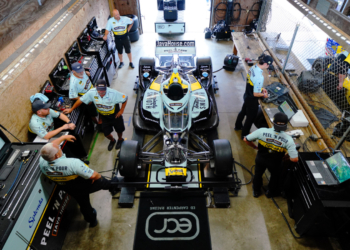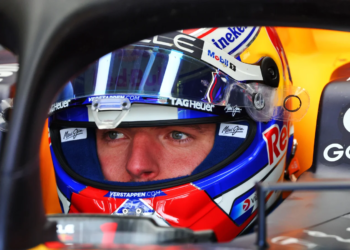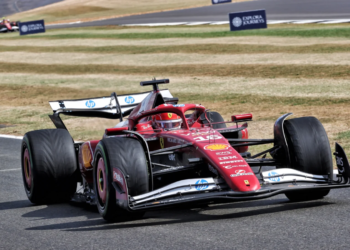Red Bull Racing was firmly third-best for large stages of the campaign but the seeds were planted for future seasons through its new collaboration with Honda, which took its first win since 2006. Motorsport Week continues its end-of-season review pieces with Red Bull-Honda.
Red Bull’s marriage with Renault finally came to a conclusion after a 12-year period in which it thrived in the V8 era but found the V6 phase more troubling, its partnership cordial at best and downright toxic at worst. With Honda it remained third overall but the groundwork was laid for the next decade, and there is renewed optimism that both chassis and engine gains through 2019 – allied to the ever-maturing Max Verstappen – means a title challenge can be launched in 2020.
The team did not start 2019 with such confidence. In comparison to Mercedes and Ferrari Red Bull was left slightly on the back foot by the overhauled front wing regulations and, while subtle changes assisted the cause, it took until Austria for a revised front wing to cure instability problems. It facilitated Verstappen in feeling the front and rear were connected and assisted in getting the capricious tyres into the right operating window on a regular basis. Revised wheel rims in France enhanced the outwash effect, lost under new regulations, and along with a revised floor, updated bargeboards and altered exhaust position it was a trickle-down effect that brought the RB15 into genuine front-running contention at several grands prix, even if it was only occasionally the fastest. What it did do was turn Red Bull from distant outsiders to legitimate challengers at most events.
.jpg)
As the chassis was continually and progressively developed so too was the power unit. Red Bull had been convinced part-way through 2018 that Honda was on the rise – having used Toro Rosso as a test bed – and took the plunge for 2019. Honda entered the year using the same concept for a third season for the first time, developing the approach that debuted in 2017, having aborted its 2015/2016 model for its third – and final – season with McLaren. That continuity meant it built on 2018 lessons and, allied to a faster aerodynamic package than anything used by the marque in the hybrid era, the progress was clear to see early on. A more profitable tyre strategy assisted matters, but the sight of Verstappen cruising past Sebastian Vettel’s Ferrari in Australia underlined Honda’s progress. Turning it up to 11 in Austria facilitated a first win, allied with Ferrari’s woes and Mercedes’ cooling struggles, but the three poles – and Brazil success – proved Honda is now in the ballpark. It still had to take engine penalties for performance and reliability updates, costing Red Bull points, but that was always expected for year one of the collaboration. Progress, and tangible results, this year was vital for Honda’s longer-term commitment and both parties can be satisfied with the scoreboard. Honda’s hierarchy has given the green-light for 2021 – a huge boost not just for the manufacturer, but for Red Bull, Toro Rosso and indeed Formula 1 as a whole.
.jpg)
Verstappen, firmly established as Red Bull’s undisputed leader, had a largely outstanding season. For much of the first half of the campaign he extracted everything from the package, splitting – or beating – the Ferrari drivers when he had no right to, and then delivering once the RB15 was in the mix. Austria display was supremely impressive, rising from eighth to first, while in Hungary he did all he could to try and add to his and Red Bull’s tally. Post-summer break dip threatened to derail his progress but thereafter he was again largely magnificent, wrapping up third place in the championship, in front of the Ferrari duo. The only major black mark against his name came with the unseemly antics and attitude in qualifying in Mexico where a lack of self-awareness and humility cost him a stronger result. But overall Verstappen has improved considerably. When he burst onto the scene he was widely lauded as a future champion. This was the year in which he proved he’s ready.
“This has been my best season,” said Verstappen. “As a person you always grow, you become a better driver throughout the years and learn a lot. Not only in driving, but in life, so I can say this has been my best. Throughout the season we have improved both the car and engine and I’m very pleased with that, because at the end of the day if you want to fight for a world championship, you can’t retire. We took five engine changes, but they were for upgrades, not for an engine being worn out, which is a good thing.”
.jpg)
Verstappen endured and enjoyed his relationship with Daniel Ricciardo, but the Australian needed a new lease of life and upped sticks for pastures new, and Red Bull failed to adequately replace his talents. Not since Ricciardo’s 2018 Monaco victory has the ‘second’ Red Bull driver finished on the podium, a testament to Pierre Gasly’s struggles and Alexander Albon’s good but not great start. Gasly failed to adapt his style to an inconsistent RB15 early on, getting dragged into the midfield pack while Verstappen thrived, with a new chassis failing to address matters. He often went missing at crucial moments, particularly Q3, and couldn’t escape the malaise. An increasingly exasperated Gasly got sucked into a negative cycle and was urged by senior management to “reset” while being assured his position was safe.
But poor displays pre-summer forced their hand and instead it was Albon who saw out the season at Red Bull. Albon’s overall pace was a slight improvement on Gasly’s performance level, but frequently he was the final of Formula 1’s leading six, albeit a more forgivable situation given his rookie status. The encouraging aspect was that his peaks – superb move on Ricciardo in Belgium, qualifying in Japan – were high, giving him plenty upon which to reflect for 2020. His rise from the Formula 2 wilderness to a front-running Formula 1 seat has been heart-warming, but the pressure will be on week in, week out, and there will be nowhere to hide.
Red Bull has had to make do with a smattering of victories most seasons in the hybrid era but with stable regulations, an increasingly compliant car, a front-running engine and a star driver, can 2020 finally be the year in which the energy drinks company puts up a sustained title fight?
.jpg)






